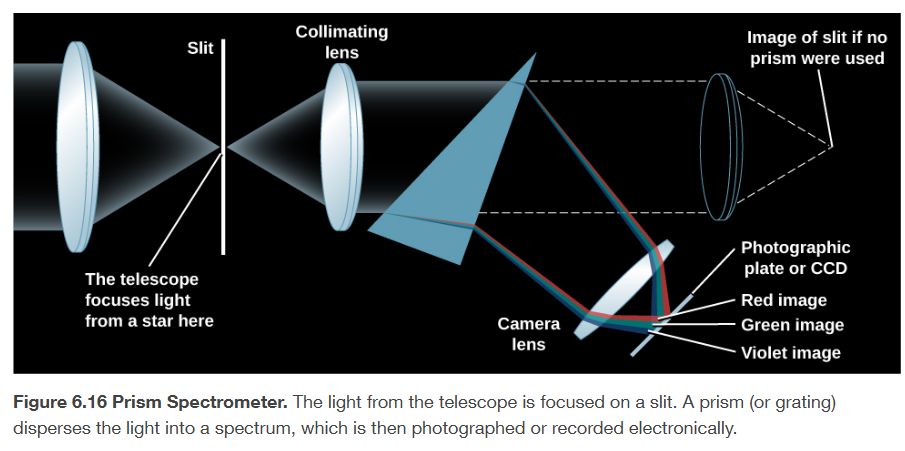chapter 6.3 visible-light detectors and instruments & 6.4 radio telescopes
1/9
There's no tags or description
Looks like no tags are added yet.
Name | Mastery | Learn | Test | Matching | Spaced |
|---|
No study sessions yet.
10 Terms
integration time
the length of time the light is put together to form an image
One important advantage of modern detectors is that the light from astronomical objects can be collected by the detector over longer periods of time; this technique is called “taking a long exposure.”
Exposures of several hours are required to detect very faint objects in the cosmos.
spectrometer
placed between the telescope and detector
allows astronomers to measure (to meter) the spectrum of a source of radiation
charge - coupled devices (CCDs)
electronic detectors to record astronomical images
Because CCDs typically record as much as 60–70% of all the photons that strike them, and the best silicon and infrared CCDs exceed 90% sensitivity, we can detect much fainter objects
spectroscopy
provides information about the composition, temperature, motion, and other characteristics of celestial objects

grating
a piece of material with thousands of grooves on its surface
spreads light out into a spectrum
electromagnetic waves
can make particles move back and forth
radio waves
can produce a current in conductors of electricity such as metals
An antenna is such a conductor
it intercepts radio waves, which create a feeble current in it.
The current is then amplified in a radio receiver until it is strong enough to measure or record.
In astronomy, however, it is more common to use sophisticated data-processing techniques that allow thousands of separate frequency bands to be detected simultaneously
Thus, the astronomical radio receiver operates much like a spectrometer on a visible-light or infrared telescope, providing information about how much radiation we receive at each wavelength or frequency.
After computer processing, the radio signals are recorded on magnetic disks for further analysis.
reflected by conducting surfaces
interferometer
when astronomers link two or more radio telescopes together electronically to sharpen the image
to get even better images, astronomers combine a large number of radio dishes into an interferometer array
interference
the way that multiple waves interact with each other when they arrive in our instruments, and this interaction allows us to coax more detail out of our observations
The resolution of an interferometer depends upon the separation of the telescopes, not upon their individual apertures
Two telescopes separated by 1 kilometer provide the same resolution as would a single dish 1 kilometer across
radar
the technique of transmitting radio waves to an object in our solar system and then detecting the radio radiation that the object reflects back
radar observations have been used to determine the distances to planets and how fast things are moving in the solar system